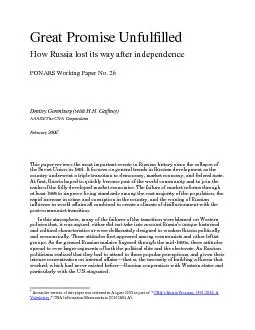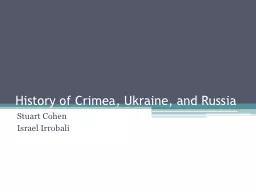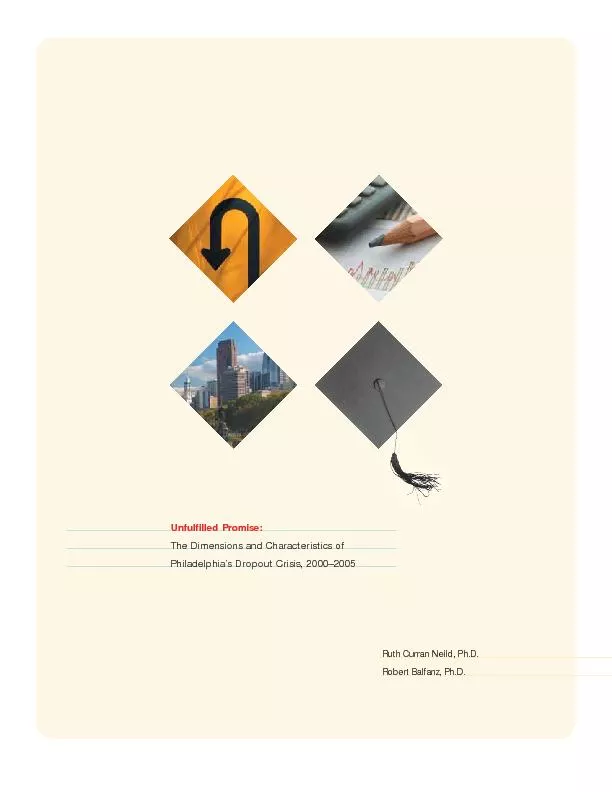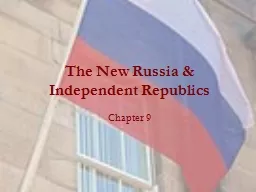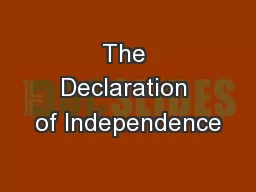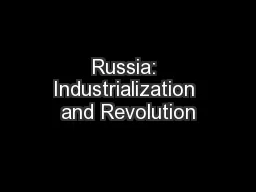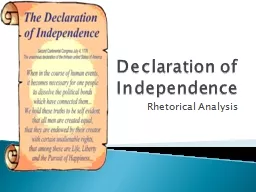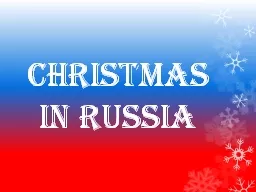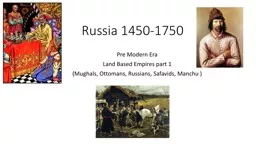PDF-Great Promise Unfulfilled How Russia lost its way after independence P
Author : tatiana-dople | Published Date : 2015-11-25
An earlier version of this paper was released in August 2005 as part of 147CNA146s Russia Program 19912004 A Valedictory 148 CNA Information Memorandum D0012804A3
Presentation Embed Code
Download Presentation
Download Presentation The PPT/PDF document "Great Promise Unfulfilled How Russia los..." is the property of its rightful owner. Permission is granted to download and print the materials on this website for personal, non-commercial use only, and to display it on your personal computer provided you do not modify the materials and that you retain all copyright notices contained in the materials. By downloading content from our website, you accept the terms of this agreement.
Great Promise Unfulfilled How Russia lost its way after independence P: Transcript
Download Rules Of Document
"Great Promise Unfulfilled How Russia lost its way after independence P"The content belongs to its owner. You may download and print it for personal use, without modification, and keep all copyright notices. By downloading, you agree to these terms.
Related Documents

